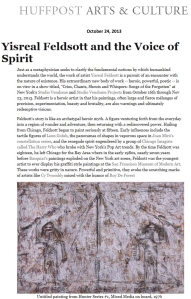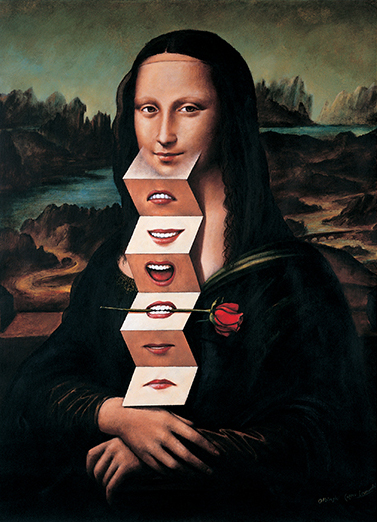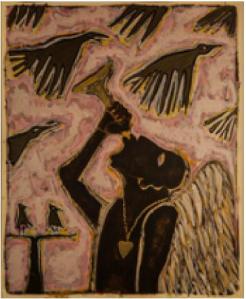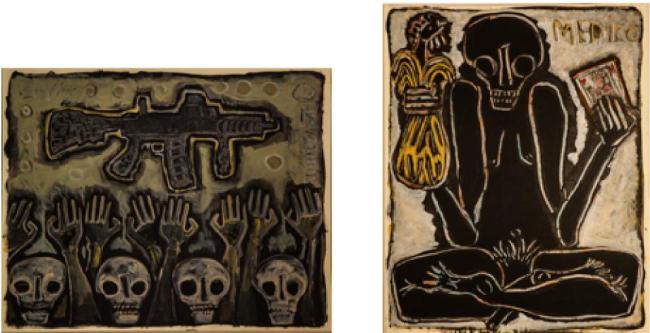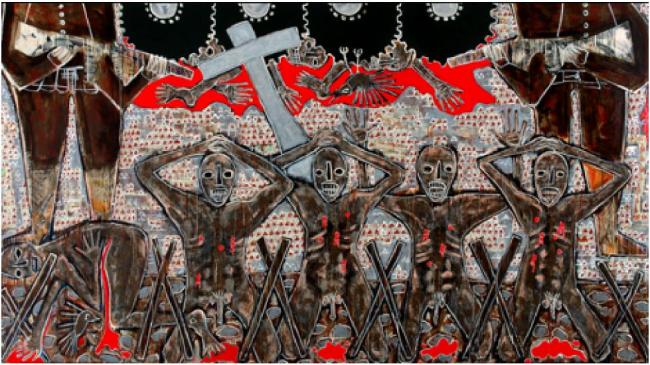Bertschmann_pressrelease_News
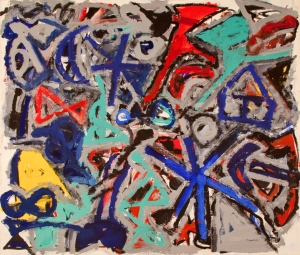
NEW YORK – JANUARY 15 – FEBRUARY 22, 2014
VERNISSAGE: WEDNESDAY, JANUARY 15 from 6:00 to 9:00 pm at Studio Vendome, 330 Spring Street, New York NY 10013
Studio Vendome begins the New Year with a compelling exhibition, “Harry Bertschmann: Abstract Dynamics.” Both Studio Vendome and Studio Vendome Projects will feature Bertschmann from January 14 through February 22, 2014. Studio Vendome, at 330 Spring Street, will present a six-decade survey composed of eleven large paintings on canvas plus sixteen works on paper in mixed media. Studio Vendome Projects, at 30 Grand Street, will focus on Bertschmann’s twenty-two smaller abstract works from his Haiku series.
Harry Bertschmann was born in Basel, Switzerland, in 1931 but has lived and worked most of his life in New York City. From 1947 to 1951, he studied at the Basel School of Design (Kunstgewerbeschule), an institution noted for its innovative use of fonts and colors in dynamic compositions. Bertschmann studied under Armin Hofmann, famous for having developed the Swiss Style in the graphic arts, and later apprenticed at the atelier of Fritz Bühler, the foremost innovator in conceptual graphic design.
In 1951 Bertschmann landed a job in Cleveland as a graphic designer and dedicated all of his spare time to developing his own abstract-expressionist style. Success came early with a first prize at the Cleveland Museum of Art for one of his oil paintings. And in 1958 he was accepted to exhibit at the Carnegie International, the prestigious international contemporary art survey exhibition in Pittsburgh. At only twenty-seven, Bertschmann was likely the youngest exhibitor, and one of his large canvases hung beside works by the first generation of the New York School who were at that time in their prime, such as Franz Kline (1910–1962,) Barnett Newman (1905–1970,) Mark Rothko (1903–1970) and Robert Motherwell (1915–1991.)
Bertschmann’s momentum was impeded soon after the Carnegie International when the US army drafted him, but he still found a way to paint. When he returned to the States, he settled in Greenwich Village. There, he and his wife, Mary, started the Bank Street Press, an independent publisher of poetry and children’s books. His wife served as editor and Bertschmann as designer. Still, painting remained his primary interest. One of the strong groups of his paintings from this period is called The Bank Street Paintings.
However, because Bertschmann never actively sought gallery representation, few critical eyes became aware of his work. It was not until 1986, when on a serendipitous studio visit, Henry Geldzahler, the former curator of the Metropolitan Museum of Art, expressed great admiration.
In 1997 Swiss colleagues arranged for a Bertschmann retrospective at the Gewerbeverband Basel-Stadt. The exhibition’s 140 works featured a wide range that illuminated the brilliance of Bertschmann’s double lives. His design life, that which supported him, produced numerous graphic designs of commercial logos and packaging, many of which have become iconic in our culture, such as those for Kent & Newport cigarettes, Pantene, Binaca, Nestlé and Bufferin. At the other end of the spectrum, his artistic life pushed the boundaries of abstract expressionism.
Now, for the first time, Bertschmann has agreed to a retrospective in New York at Studio Vendome in Hudson Square, West of SoHo. An opening reception will be held at 330 Spring Street on Wednesday, January 15th from 6pm to 9 pm. For the event art historian and critic Robert C. Morgan, who has written a critical essay on Bertschmann, will engage the artist in a conversation beginning at 7pm.
The galleries of Studio Vendome uniquely showcase the works of late-career artists and artist’s estate collections that deserve greater critical recognition. Peter Hastings Falk, the noted art historian and art reference publisher, is curator of these rediscovered artists’ exhibitions, which are part of the unprecedented “Rediscovered Masters” series. An Art Advisory Board composed of distinguished museum directors, curators, historians, and critics elect artists.
